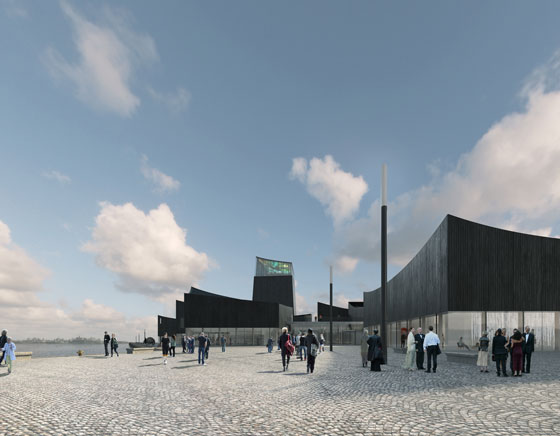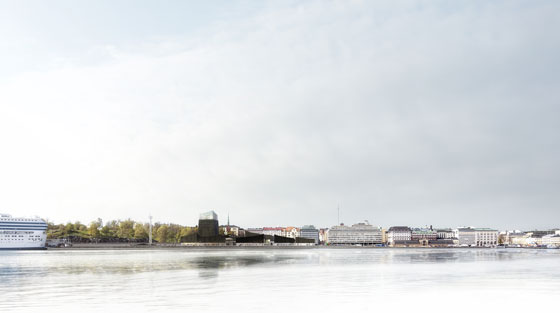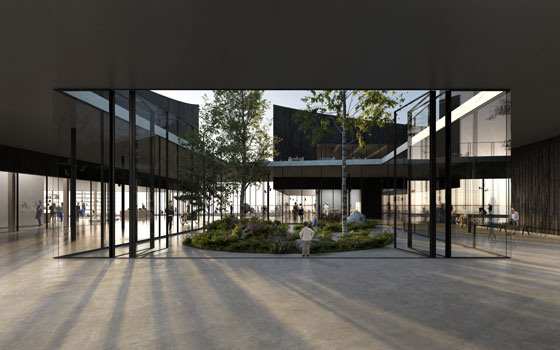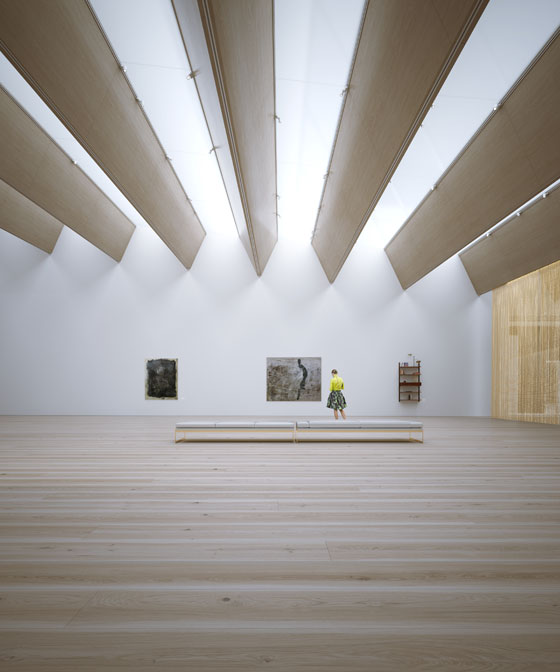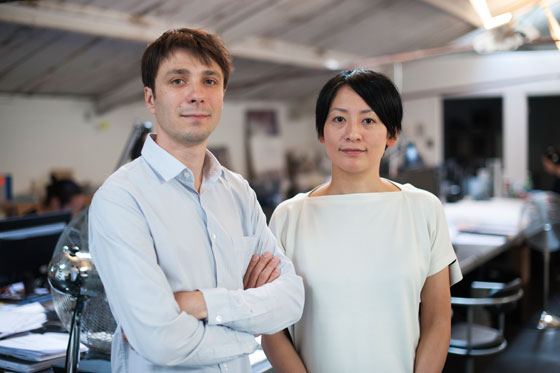Guggenheim Helsinki: Art to light up the city
Text von TLmag
Brussels, Belgien
09.03.16
It was one of the highest-profile competitions of the past few years and for a relatively unknown studio to come out on top was a surprise and a welcome change from the usual starchitects that dominate the international circuit.
Guggenheim Helsinki main entrance; © Moreau Kusunoki, ArtefactoryLab
For Moreau Kusunoki, the project may be their big break but the husband and wife duo are staying level-headed about the sudden attention to their work; and reluctant to elaborate on an overarching design philosophy: “We are still in the process of defining it! We try to listen and observe and do things simply and honestly.”
With over 1715 entries from 77 countries, it was like playing the lottery but a game that could not have been refereed more fairly. In line with Finland’s long his- tory of equalitarianism, the name of the architect was not revealed to the panel of jurors until they had made a decision on the winning design. Seeming to have ticked all the boxes, the jury favoured the thoughtful proposal of Nicolas Moreau and Hiroko Kusunoki for being “deeply respectful of the site and setting” and “distinctive and contemporary, without being iconic” to ultimately create a “museum of the future.”
Helsinki harbour view; © Moreau Kusunoki, ArtefactoryLab
The garden square; © Moreau Kusunoki, ArtefactoryLab
The long gallery; © Moreau Kusunoki, ArtefactoryLab
A transparent museum for living
Their plan lays out the museum as its own little village, consisting of interlinked pavilions and a lookout tower rising above it all. Clad in locally sourced charred- timber, the new museum will be sustainably constructed with large, triple-glazed, windows connecting inside and outside. Trying to achieve what they call a “fragmented continuum,” the architects took the brief at hand wondering: “How can we make the museum transparent? How can we create porosity between the museum and its surroundings to allow a free flow of visitors on the site?” The result is a functional public space with understated features like concave roofs and an abundance of wood – a staple in both Asian and Nordic architecture – hinting at the couple’s design influences.
The upper deck; © Moreau Kusunoki, ArtefactoryLab
Before establishing their own Paris-based agency in 2011, the pair mastered their trade in Tokyo–Hiroko at Shigeru Ban and Nicolas at Kengo Kuma. Japanese aesthetics and knowhow are clearly visible in their approach, but applied from a Western point of view. “Our cultural duality is legible in all of the projects we conceive,” the partners care to share. “Our work is intended to be timeless and yet, establishes a dialogue with the past to build links with the future; while creating a feeling of intimacy.” One thing is clear: this is a whole new, intriguing direction for Guggenheim after its more dazzling and hypermodern outposts in Bilbao and Abu Dhabi.
---

